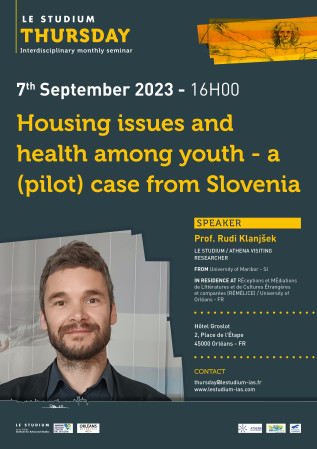This research project is at the crossroads of museography, digital humanities, and Library science. It aims to analyze the transformation of physical areas in heritage spaces (museums, libraries, archives) consequent to the development of digital humanities. Until the present time, research in museography and library science has taken parallel paths that rarely converge. However, today museums, libraries and archives are obliged to rethink their public spaces in light of the fact that new practices of their often identical publics, navigate into virtual worlds generated by the digital revolution. The crucial question today is how to design and develop these new heritage spaces by offering a real dialogue between the physical collections and the digital humanities projects that are developed from them. Our research project aims to take stock of the research carried out in innovative places in order to propose new ways of developing heritage spaces in line with the current of the public. Six geographical areas will be considered (France, Belgium, Netherlands, England, Denmark, and Switzerland).
Synaptic transmission is of critical importance for the neurons to communicate, and abnormalities are observed in neurodegenerative diseases, psychiatric disorders, and intellectual disability. Loss of the synaptic vesicle proteins is shared among these disorders and is being noted as one of the earliest hallmarks of neurogenerative diseases. Therefore, novel therapeutics targeting synapses are fundamental to improve brain plasticity and maintain a healthy brain function. Here, we propose to normalize synaptic protein levels by targeting unstable synaptic mRNAs using antisense RNA enhancer molecules with the ‘long-term goal’ of developing a therapy for patients with synaptic dysfunction, specifically in Alzheimer’s Disease (AD) and Amyotrophic Lateral Sclerosis (ALS). Our ‘hypothesis’ is that stabilization of unstable synaptic mRNA’s by antisense RNA molecules will be effective in enhancing and restore the levels of downregulated synaptic proteins in AD and ALS. As a ‘proof of concept’ antisense RNA molecules targeting 5’UTR regions of unstable synaptic genes (synapsin and synaptophysin) fused to enhancer elements such as SINE. To explore the efficacy and specificity, three different binding domains that span the 5’UTR region and transcription start sites (-40/+32, -40/+4, -14/+4) per gene were prepared and screened in a cell line that endogenously expresses the target genes. Our preliminary results show that SINEUP elements enhanced protein translation of the synapsin dimer by 80% and the monomers by 40%. This significant enhancement can stimulate synaptogenesis, synaptic vesicle recruitment, and maintain the mature synapses. An increase in synaptophysin was also observed. Ex vivo studies using a diseased cell model are in progress to assess phenotype and function. This is a promising step toward targeting synapses in neurodegenerative diseases.
In Europe, most of today’s courthouses are symbolically silent. Because Justice not only needs to be done but also needs to be seen to be done, this project intends to exemplify the claim that images of justice have an important role to play in the maintenance of social bonds. The power of judicial images is a useful ally to revive the foundational principles of fair trial and due process. Drawing inspiration from visual studies, cultural legal history, legal anthropology, this multidisciplinary investigation aims at revealing the essential dynamic function of a civic allegory: its composition or invention, its role into the dissemination of meaning and the ways in which it was perceived by different audiences, in order to question to which extent this device fulfilled didactic, persuasive, mnemonic, evidential, or deontological functions.
The tropical plant Madagascar periwinkle (Catharanthus roseus) is a natural source of anticancer monoterpene indole alkaloids (MIA), such as vinblastine and vincristine, two molecules of major interest and therapeutic values. The MIA biosynthetic pathway in C. roseus is described in the literature as the most complex pathway in all living organisms and shows, in planta, an outstanding compartmentation at both cellular and subcellular levels. Our approach aimed to producing vindoline and catharanthine, two precursors of vinblastine and vincristine, in yeast cell factories. In particular, we developed and optimized yeast cell factories efficiently converting tabersonine to vindoline. First, fine-tuning of heterologous gene copies restrained side metabolites synthesis towards vindoline production. Tabersonine to vindoline bioconversion was further enhanced through a rational medium optimization (pH, composition) and a sequential feeding strategy. Finally, a vindoline titer of 266 mg/L (88% yield) was reached in an optimized fed-batch bioreactor. This precursor-directed synthesis of vindoline thus paves the way towards a future industrial bioproduction through the valorization of abundant tabersonine resources.
Co-infection is an important aspect of many infectious diseases, with substantial modeling efforts in the last decades. Yet, simple and sufficiently general mathematical frameworks to analyze and unify the full spectrum of hierarchical patterns emerging from co-infection interactions and variation in other fitness dimensions between two or more strains are missing. Here, we contribute to fill this gap, thanks to a model reduction obtained after assuming strain similarity. We model simultaneously 5 fitness dimensions where strains can differ close to neutrality, and decompose dynamics in two timescales: neutral dynamics between types on a fast timescale, and non-neutral selective processes on a slow timescale, driven explicitly by trait variation and a replicator equation. We bridge adaptive dynamics and epidemiological multi-strain models, generalizing and advancing analytically these two perspectives on co-infection and coexistence.
The increasing need in the development of storage devices is calling for the formulation of alternative electrolytes, electrochemically stable and safe over a wide range of conditions. To achieve this goal, electrolyte chemistry must be explored to propose alternative solvents and salts to the current acetonitrile (ACN) and tetraethylammonium tetrafluoroborate (Et4NBF4) benchmarks, respectively. Herein, phenylacetonitrile (Ph-ACN) has been proposed as a novel alternative solvent to ACN in supercapacitors. To establish the main advantages and drawbacks of such a substitution, Ph-ACN + Et4NBF4 blends were formulated and characterized prior to being compared with the benchmark electrolyte and another alternative electrolyte based on adiponitrile (ADN). While promising results were obtained, the low Et4NBF4 solubility in Ph-ACN seems to be the main limiting factor. To solve such an issue, an ionic liquid (IL), namely 1-ethyl-3-methylimidazolium bis[(trifluoromethyl)sulfonyl] imide (EmimTFSI), was proposed to replace Et4NBF4. Unsurprisingly, the Ph-ACN + EmimTFSI blend was found to be fully miscible over the whole range of composition giving thus the flexibility to optimize the electrolyte formulation over a large range of IL concentrations up to 4.0 M. The electrolyte containing 2.7 M of EmimTFSI in Ph-ACN was identified as the optimized blend thanks to its interesting transport properties. Furthermore, this blend possesses also the prerequisites of a safe electrolyte, with an operating liquid range from at least −60 °C to +130 °C, and operating window of 3.0 V and more importantly, a flash point of 125 °C. Finally, excellent electrochemical performances were observed by using this electrolyte in a symmetric supercapacitor configuration, showing another advantage of mixing an ionic liquid with Ph-ACN. We also supported key structural descriptors by density functional theory (DFT) and COnductor-like Screening Model for Real Solvents (COSMO-RS) calculations, which can be associated to physical and electrochemical properties of the resultant electrolytes.
The fall armyworm Spodoptera frugiperda is recognized as a polyphagous, voracious, and economically important pest in America and other continents. The control of this pest has been used mainly chemical insecticides, but biological control is an alternative strategy, and different isolates of baculoviruses were evaluated for this control. In this work, the biological activity, in vitro susceptibility, phylogenetic relationship, and protein expression in insect cells of six SfNPV baculoviruses isolated from S. frugiperda were determined. The infection of the cell line Sf9 was permissive to four of the five SfNPVs strains and non-infective to the SfGV strain. SfNPV isolates from Argentina, Honduras and the USA were more virulent than those from Mexico, resulting in up to 12 and 1000 times more effectiveness. The genes lef-8, lef-9 y polh/granulin were partially amplified in five SfNPVs and the SfGV, where nucleotide changes were identified in lef-8 of the SfNPVs and lef-8, lef-9, and granulin from SfGV-RV. The phylogenetic analysis showed that the five strains SfNPVs turn out to be closely related to the others reported SfNPV, just like the strain SfGV-RV and SfGV. The protein expression of host cells in response to SfNPV-Fx identified six proteins differentially expressed. They are involved in changes in the host cell, altering its cellular structure and normal functions. The characterization from these six SfNPV strains has established the basis for exploring the specific mechanisms, evolution, and ecology to evaluate the potential to be used as biological control agents against S. frugiperda.
Institutions working in cultural heritage contexts have at their disposal large quantities of data, which need to be properly handled and classified to be used in applications, shared, and possibly even integrated. For these purposes to be achieved, shared conceptual models - in the form of ontologies - are needed. CIDOC-CRM is the reference standard for managing cultural heritage data. However, some of its modeling choices do not meet the modeling criteria of formal ontology. The purpose of this report is to document the research work done during my fellowship at Le Studium in 2019-2020 concerning the use ontologies for cultural heritage. This covers the ontological analysis of (some portions of) CIDOC and the development of an extension of the latter model for research purposes in the scope of scientific projects at the IPAT-CESR.


